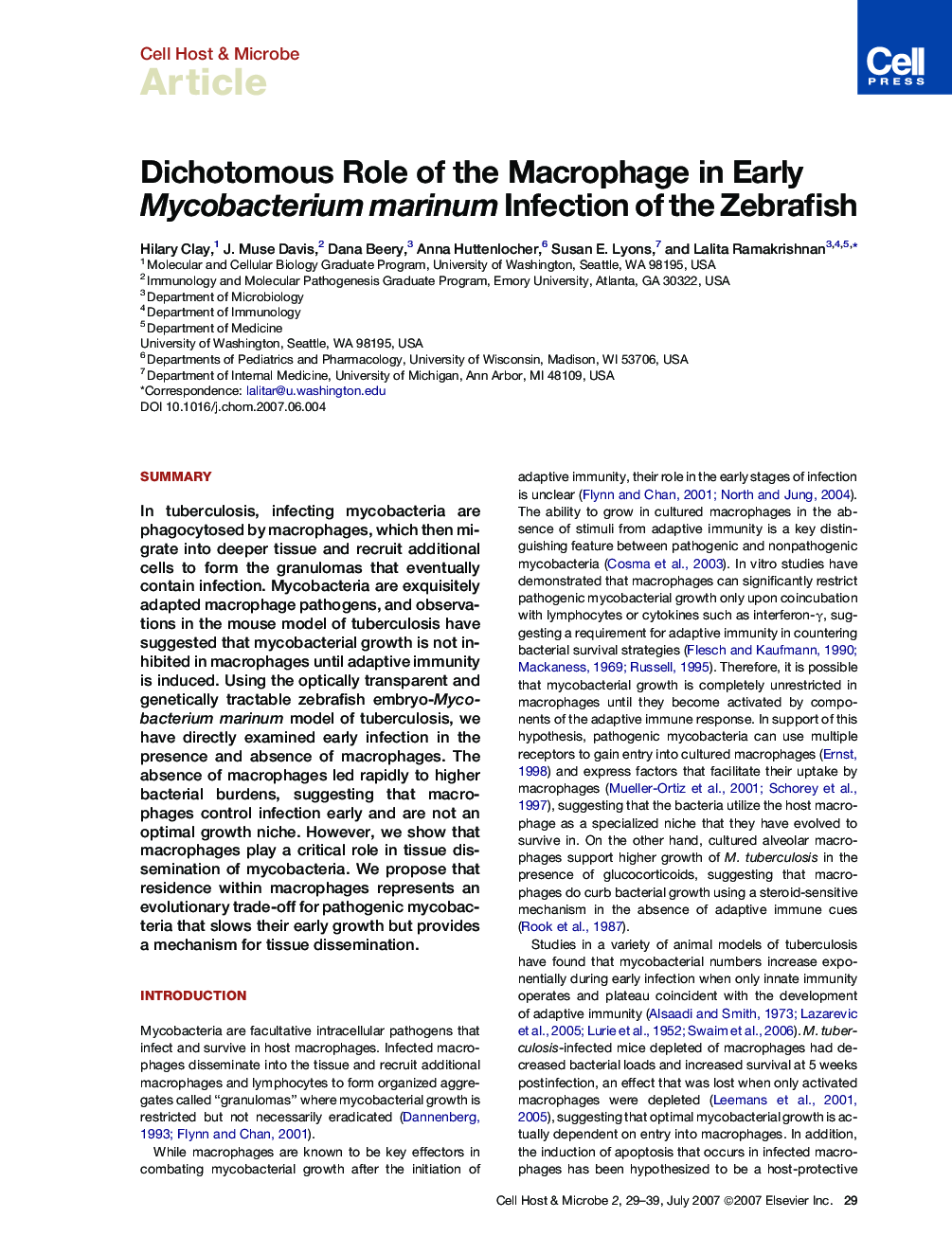| Article ID | Journal | Published Year | Pages | File Type |
|---|---|---|---|---|
| 4361865 | Cell Host & Microbe | 2007 | 11 Pages |
SummaryIn tuberculosis, infecting mycobacteria are phagocytosed by macrophages, which then migrate into deeper tissue and recruit additional cells to form the granulomas that eventually contain infection. Mycobacteria are exquisitely adapted macrophage pathogens, and observations in the mouse model of tuberculosis have suggested that mycobacterial growth is not inhibited in macrophages until adaptive immunity is induced. Using the optically transparent and genetically tractable zebrafish embryo-Mycobacterium marinum model of tuberculosis, we have directly examined early infection in the presence and absence of macrophages. The absence of macrophages led rapidly to higher bacterial burdens, suggesting that macrophages control infection early and are not an optimal growth niche. However, we show that macrophages play a critical role in tissue dissemination of mycobacteria. We propose that residence within macrophages represents an evolutionary trade-off for pathogenic mycobacteria that slows their early growth but provides a mechanism for tissue dissemination.
